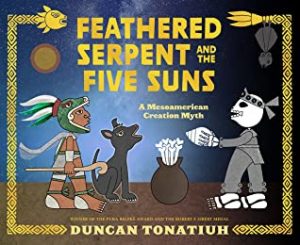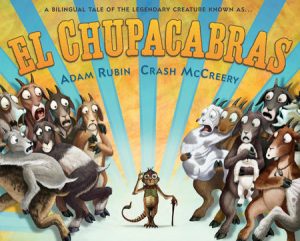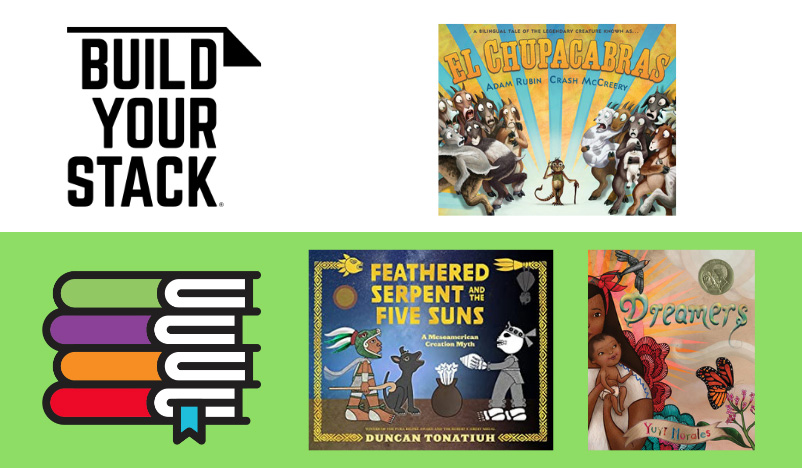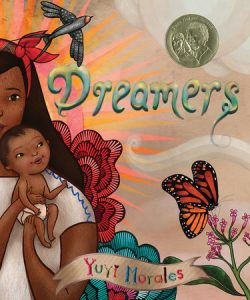This blog post was written by NCTE member Dorian Harrison. It’s part of Build Your Stack,® an NCTE initiative focused exclusively on helping teachers build their book knowledge and their classroom libraries. Build Your Stack® provides a forum for contributors to share books from their classroom experience; inclusion in a blog post does not imply endorsement or promotion of specific books by NCTE.
As a literacy and language professor, I know from my own research that bilingual books offer both a cultural and a linguistic experience for all readers. Children experience the joys of learning about cultures and languages that are near to and distant from their own.
As educators, we know that our classrooms embody a repertoire of languages that are not often privileged in curricula. However, we have the power to invite and challenge these curricula by exposing our students to the exciting world of bilingual books.
There is a wide range of complexities when considering bilingual books in your classroom. In my teaching of K–6 and preservice teachers, I provide examples of Spanish-English texts to use.
 If you are just entering the world of bilingual texts, I suggest authors such as Duncan Tonatiuh, who offers in-text pronunciations.
If you are just entering the world of bilingual texts, I suggest authors such as Duncan Tonatiuh, who offers in-text pronunciations.
Yuyi Morales uses multiple cognates and writes in such a way that readers can easily infer the meanings.
 Adam Rubin, in El Chupacabras (illustrated by Crash McCreery), challenges readers’ knowledge of two languages, both Spanish and English, with mid-sentence language shifts.
Adam Rubin, in El Chupacabras (illustrated by Crash McCreery), challenges readers’ knowledge of two languages, both Spanish and English, with mid-sentence language shifts.
Bilingual books build engaged readers who feel at home and challenged by the texts. They offer students a richer literary experience when readers can immerse themselves in the language of others. Dr. Rudine Sims-Bishop writes that we must seek to include literature that shapes and forms windows onto the world. The move toward bringing bilingual books into the curriculum is one way to accomplish this goal.
Bilingual books are not about simply placing the books in your library and hoping they will get utilized by your students. Likewise, the books are not an answer to diversity issues in your classroom teaching. Bilingual books deal with the same issues that monolingual books address: colorism, gender, and more. These social issues are global, so similar themes may be observed within these texts as well. However, when bilingual books are woven into the classroom in authentic and critical ways, the classroom culture and environment grow in ways that cannot be measured.
There are several ways you can use bilingual books in your classroom.
- Library Section: You can highlight having a bilingual text set in your classroom library. Make use of the books during read-alouds or shared reading. Then make sure you highlight where students can locate the books after you are finished.
- Multiple Perspectives: Bilingual books can highlight historical journeys in American history from new perspectives and often add authentic voices to your classroom. In other words, build a text set that includes Sylvia and Aki as well as Separate Is Never Equal: Sylvia Mendez and Her Family’s Fight for Desegregation.
- Home-to-School Connection: Bilingual books can be used as a bridge between your classroom and your students’ homes. Families whose first language is not English may appreciate the bilingual books being used and your highlighting of those texts. However, note that not all families want their children focused on the home language while in school.
- Cultural and Global Knowledge: Bilingual books can be used to enhance your students’ cultural and linguistic knowledge of languages around the world. From the alphabetic systems to characters, students learn various modes of communicating across countries and continents.
- A Love of Language: While every school cannot be a dual immersion program, students can still be exposed to various languages and begin to learn those words and phrases. This could spark a continued love and passion for a particular language that could last a lifetime.
- Empathy Building: At times, students are not aware of the struggles our English language learner (ELL) students experience learning English. When you use bilingual books that connect to your ELL students’ home languages, you place them in a position of power and expertise. They know how the language should sound and how to assist others with pronunciation. This creates an environment of understanding for all involved.
Many of these suggestions and benefits come with the understanding that culturally responsive teaching efforts must be paired with these texts. Before you can assign books that are relevant, you must first learn what is linguistically relevant in the lives of students and the community.
Below are some additional resources for creating your own book stack in various languages:
School Library Journal’s Fuse 8 Production Blog (featuring a Spanish-English booklist)
Bringing bilingual books into your classroom is an application of culturally and linguistically responsive teaching to your everyday activities for students and their families. In this way, students feel valued and respected and grow in their knowledge of the world.
 Dorian Harrison is an assistant professor in the Department of Teaching and Learning at The Ohio State University at Newark. Her research interests focus on equity issues in literacy education, paying particular attention to how race, class, and language impact teaching and learning. Harrison is a member of the NCTE Committee Against Racism and Bias in the Teaching of English. Currently, she teaches literacy courses aimed at developing students’ awareness and use of diverse literature in their classrooms and theories of comprehension and writing for K–8 teachers. Twitter: @dr_dorih
Dorian Harrison is an assistant professor in the Department of Teaching and Learning at The Ohio State University at Newark. Her research interests focus on equity issues in literacy education, paying particular attention to how race, class, and language impact teaching and learning. Harrison is a member of the NCTE Committee Against Racism and Bias in the Teaching of English. Currently, she teaches literacy courses aimed at developing students’ awareness and use of diverse literature in their classrooms and theories of comprehension and writing for K–8 teachers. Twitter: @dr_dorih
It is the policy of NCTE in all publications, including the Literacy & NCTE blog, to provide a forum for the open discussion of ideas concerning the content and the teaching of English and the language arts. Publicity accorded to any particular point of view does not imply endorsement by the Executive Committee, the Board of Directors, the staff, or the membership at large, except in announcements of policy, where such endorsement is clearly specified.


